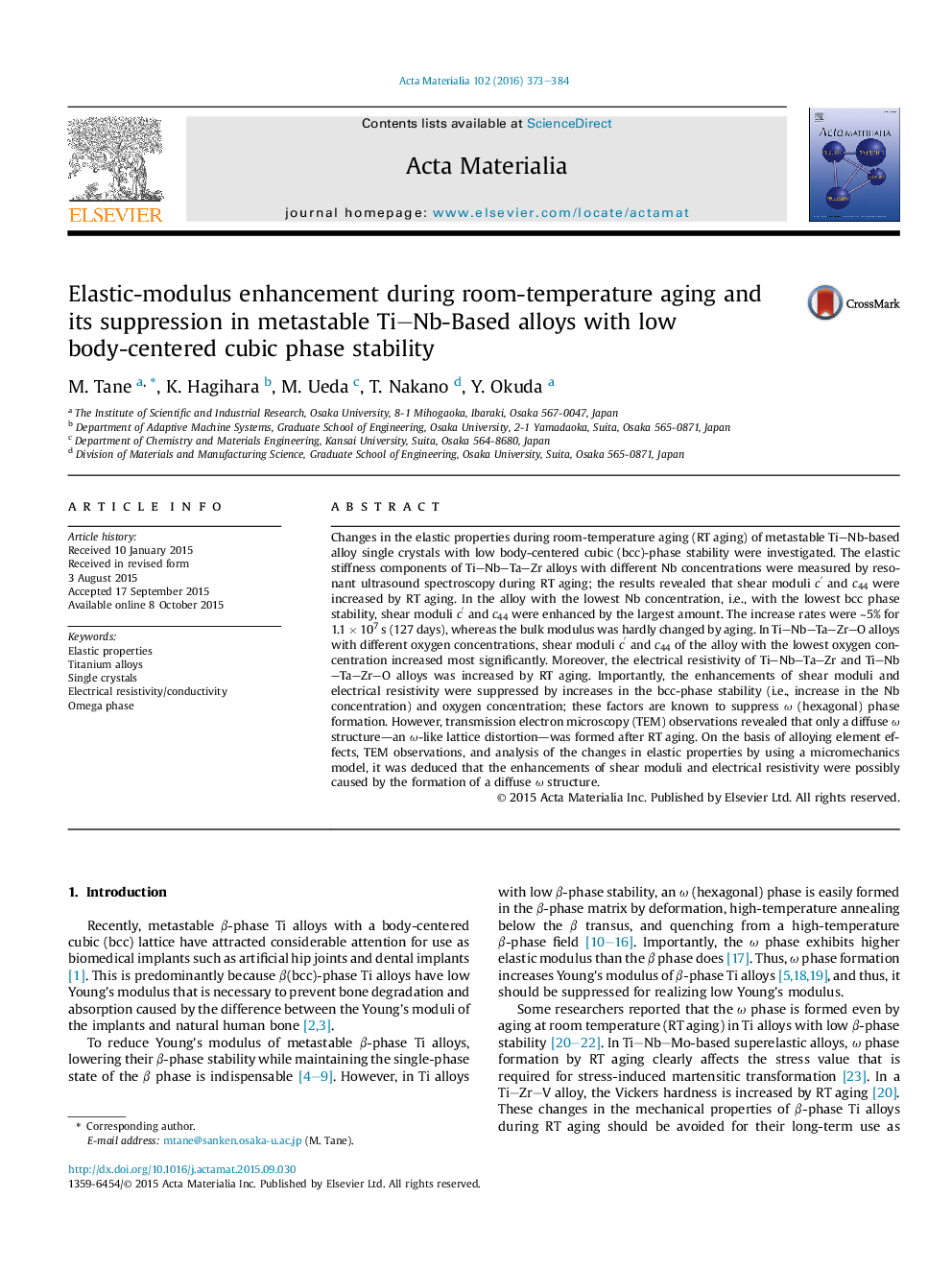| کد مقاله | کد نشریه | سال انتشار | مقاله انگلیسی | نسخه تمام متن |
|---|---|---|---|---|
| 1445213 | 1509574 | 2016 | 12 صفحه PDF | دانلود رایگان |

Changes in the elastic properties during room-temperature aging (RT aging) of metastable Ti–Nb-based alloy single crystals with low body-centered cubic (bcc)-phase stability were investigated. The elastic stiffness components of Ti–Nb–Ta–Zr alloys with different Nb concentrations were measured by resonant ultrasound spectroscopy during RT aging; the results revealed that shear moduli c′ and c44 were increased by RT aging. In the alloy with the lowest Nb concentration, i.e., with the lowest bcc phase stability, shear moduli c′ and c44 were enhanced by the largest amount. The increase rates were ∼5% for 1.1 × 107 s (127 days), whereas the bulk modulus was hardly changed by aging. In Ti–Nb–Ta–Zr–O alloys with different oxygen concentrations, shear moduli c′ and c44 of the alloy with the lowest oxygen concentration increased most significantly. Moreover, the electrical resistivity of Ti–Nb–Ta–Zr and Ti–Nb–Ta–Zr–O alloys was increased by RT aging. Importantly, the enhancements of shear moduli and electrical resistivity were suppressed by increases in the bcc-phase stability (i.e., increase in the Nb concentration) and oxygen concentration; these factors are known to suppress ω (hexagonal) phase formation. However, transmission electron microscopy (TEM) observations revealed that only a diffuse ω structure—an ω-like lattice distortion—was formed after RT aging. On the basis of alloying element effects, TEM observations, and analysis of the changes in elastic properties by using a micromechanics model, it was deduced that the enhancements of shear moduli and electrical resistivity were possibly caused by the formation of a diffuse ω structure.
Figure optionsDownload high-quality image (308 K)Download as PowerPoint slide
Journal: Acta Materialia - Volume 102, 1 January 2016, Pages 373–384